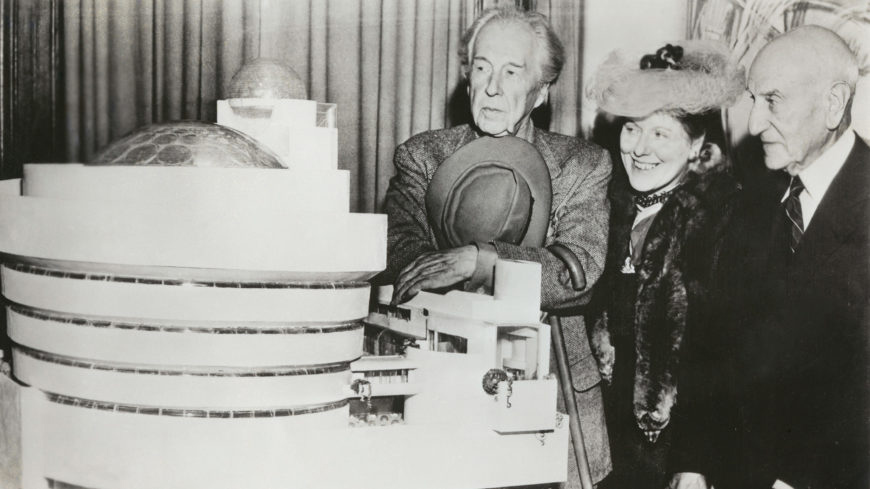
The Guggenheim Museum is one of the icons of New York
 |
New York – The Guggenheim Museum in New York has been the focus of admirers of modern art for decades, attracting visitors not only for its top-notch works but also for the building itself. Works by Picasso, Chagall, Pollock, and Kandinsky can be admired in perhaps the most famous building designed by American architect Frank Lloyd Wright, which is essentially one of the exhibits. Philanthropist Solomon Robert Guggenheim played a key role in making this private collection accessible when the museum opened on October 21, 1959, although neither he nor Wright lived to see it.
Last year, the museum, which houses over 8,000 works, welcomed more than 850,000 visitors. Since June of this year, the museum has been led by Dutchwoman Mariët Westermann.
The modern cylindrical circular building with ribbon windows reminiscent of a hatbox is located in a "good address" on the edge of Central Park. The museum's centerpiece is a massive concrete spiral that gives the building its distinctive shape. Inside, it serves as a ramp for walking, with paintings installed on its walls. A glass ceiling brings light into the space, whose star-shaped design consists of 13 separate pieces. The building initially faced significant reluctance from New Yorkers—some found it provocative, while others saw it as dull.
The Guggenheim Museum was originally focused on the development of non-figurative art, but gradually became a gallery of modern art spanning from Impressionism and Post-Impressionism to the latest artistic trends. Retrospective exhibitions of Paul Klee (1967) and Piet Mondrian (1971), as well as insights into some nonconformist personalities, such as the German provocateur Joseph Beuys, received considerable acclaim. The museum continues to acquire paintings and entire collections, including a valuable set of minimalist art in 1991.
The history of the collection reportedly began with a bet. Guggenheim (1861 to 1949), a well-known industrialist and one of the wealthiest men of his time, attended a social dinner in 1928, and on a whim, he bet his neighbor that she couldn't paint his portrait. That woman was the then thirty-eight-year-old baroness and painter Hilla von Rebay, who studied art and sympathized with the Dadaists and artists around the Bauhaus school. Rebay sensed an opportunity in the bet to gain an influential patron for her support of modern art.
Her eloquence and charm were successful; soon after their initial meeting, Guggenheim purchased his first abstract paintings. The baroness introduced him to leading artists and later became a driving force behind the growing collection. In 1937, the patron established his own foundation, thereby providing a solid legal basis for his future collection. Just two years later, the first Guggenheim Museum of Abstract Art opened in a former New York car dealership. In 1948, the foundation took over the entire estate of art dealer Karl Nierendorf.
The gallery was significantly influenced by Thomas M. Messer, an expert of Czech origin and a refugee from the Nazis (who died in 2013). In 1961, he took over the leadership of the institution for 27 years, bringing it into the elite. One of his savvy moves was acquiring the collection of Justin Thannhauser, which included masterpieces of Impressionism, Post-Impressionism, and the early Parisian school (including 34 works by Pablo Picasso). Messer did not forget about his compatriots; he purchased the first painting by František Kupka for the museum and presented works by Stanislav Kolíbal and Jiří Kolář.
The Guggenheim Foundation also includes other branches. The opening of the museum in Bilbao, Spain (1997), was met with great acclaim, aided by the extravagant building designed by Frank Gehry (the architect of Prague's Dancing House), which serves as a tourist magnet. Guggenheim’s niece Peggy (the daughter of his brother Benjamin, who perished in the Titanic disaster) exhibited her collection in one of the Venetian palaces. Later, additional Guggenheim museums were established in Abu Dhabi in the UAE.
The English translation is powered by AI tool. Switch to Czech to view the original text source.
0 comments
add comment
Related articles
0
21.09.2021 | The FaVU Gallery opens an exhibition about the forgotten architect Jaroslav J. Polívka
0
18.10.2019 | The Guggenheim Museum boasts modernity, the building itself is equally enticing
0
31.01.2015 | 10 iconic houses of F. L. Wright have been added to the UNESCO list
0
19.10.2009 | The Guggenheim Museum is calling for a special procedure, says former director
0
06.06.2007 | The buildings of F. L. Wright often "spilled" into nature












